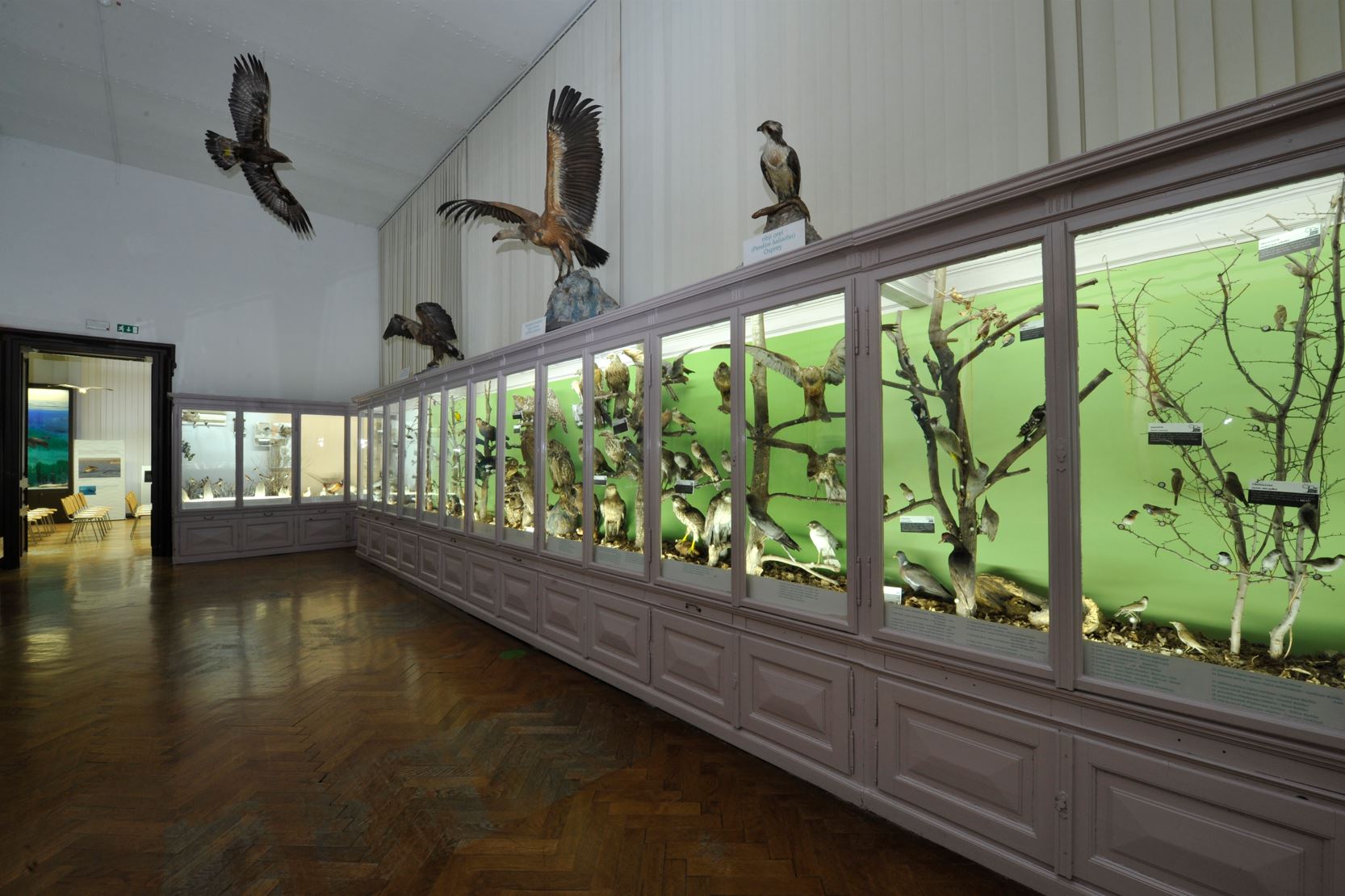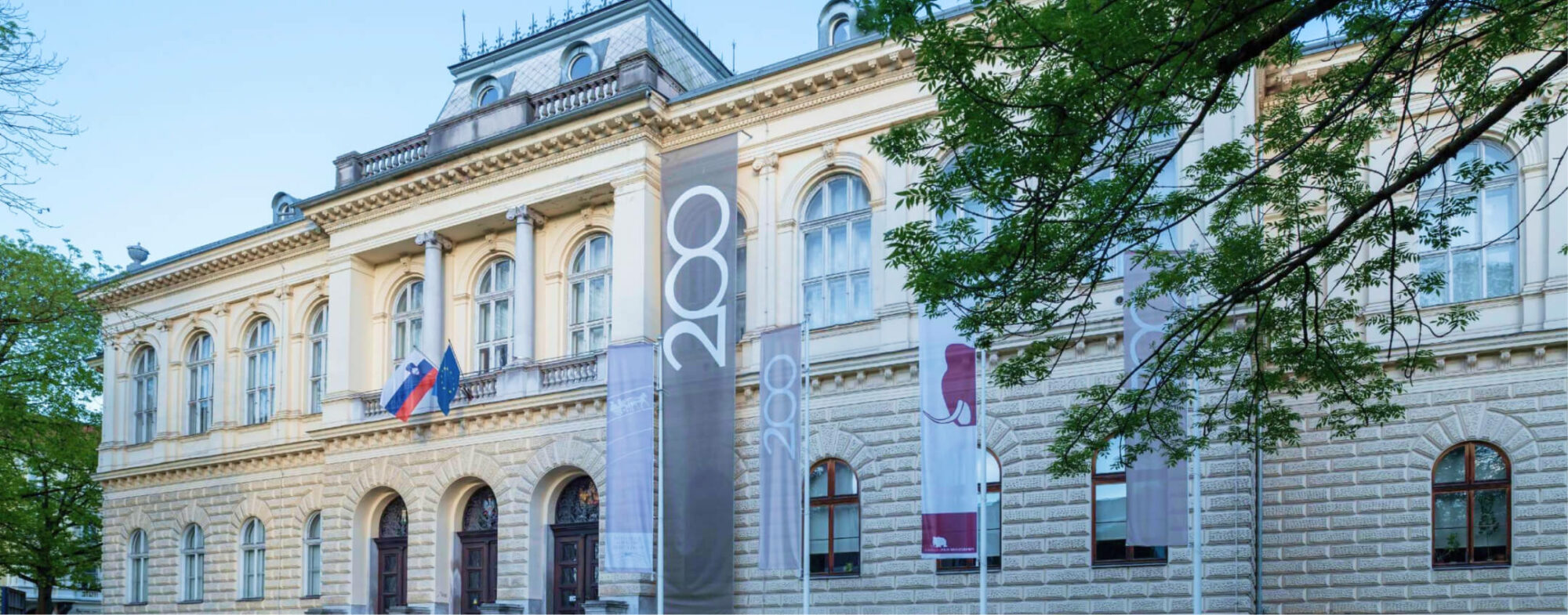In the bird collection, the species inhabiting predominantly cultural landscape are presented, while in the right part of the display case a bee-eater can be seen, digging nesting burrows in the sand walls. Exhibited are ducks, geese and swans – aquatic birds belonging to the group of Lamellirostres. They were given their name after the numerous lamellae or dental plates, arranged in a regular series on the margins of their beaks. On them, food is gathered file filtering the water. The specimens in the central part of the bird collection are arranged partly according to their size and partly in view of the characteristic habitats. Presented on the right are, roughly, riparian birds living along rivers, followed by smaller species often noticed in the shrubbery, on forest edges and in commons, then birds looking for food on tree trunks, followed by birds of prey, owls, corvids and smaller woodland birds. In the extreme left part of the central part of the bird collection, there are birds living in rock walls, often high in the mountains. Exhibited are the species that can be found predominantly in cultural landscapes, while on the right-hand side, the Kingfisher can be seen, known for making nest holes in sandy banks.
In the collection of reptiles, serpents, lizards, crocodiles and turtles are exhibited. The collection comprises all Slovenian snake species and the Nile crocodile. The specimens of tropical reptiles on display here were originally owned by the Missionary Museum that functioned in Ljubljana during the 19th century. When closed down, individual specimens were donated to the Slovenian Museum of Natural History.
In the more than a hundred years old museum collection, freshwater fish are presented. The displayed specimens unfortunately lost their original colour in the course of time. As an interesting fact, let us describe how the majority of the exhibited fish were mounted in a very special way: the dealt with fish was cut open on the belly, skinned and its carcass removed, then filled with hot sand and sewn up. Now they shaped the fish adequately and then allowed the skin to harden thanks to the hot sand. Then they poured the sand out through its mouth, painted the fish, placed it on a suitable base – and put it on display. All our attention deserves to be given to the specimen of the representatives of the sturgeons, the Russian sturgeon, a fish that can no longer be seen in Slovenian rivers. The museum specimen, caught in 1883 in the Sava River near Ljubljana, is a good metre long. The wels catfish belongs to the true catfish family. It inhabits large rivers with deep pools and in deep lakes. This is a nocturnal fish hiding in great water depths during the day. It hibernates in deep holes at the bottom of lakes and rivers. It spawns in the midst of vegetation during sudden air pressure drops from May to June. The male builds a simple nest out of plants, and the female attaches her eggs to it. The male keeps an eye on them until they hatch. During flooding, catfish spawn in inundated meadows, but under the condition that the water temperature does not fall below 18 degrees Celsius. After spawning, the adults return to deeper waters. The wels catfish is a distinct predator feeding on fish as well as little aquatic birds and smaller mammals. It can grow up to 5 metres in length and is classified as a game and commercially important fish species. It is widespread in Europe, as well as north of the Alps. It is often found at the mouths of rivers flowing into the Black Sea. In Slovenia, it inhabits mostly the Danubian catchment, but can also be found in many stagnant and slow-flowing inland waters, including the Vipava River. It has been artificially introduced to the lower reaches of the Soča River and is classified as a vulnerable species in the Slovenian list of endangered species. It is protected by law and has a certain protection period. It may be interesting to know that the wels catfish’s lifespan is up to 80 years, which is a record among Slovenian freshwater fish.
In the collection of various vertebrates skeletons, skeletons of mammals, birds and reptiles are on display, including a real human skeleton.

Collection of Birds. Photo: Ciril Mlinar Cic


